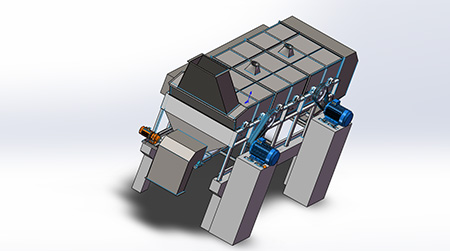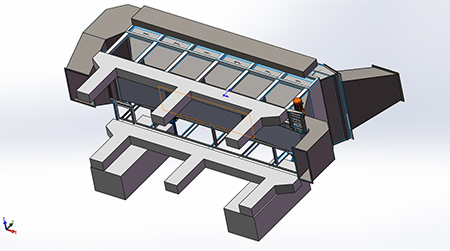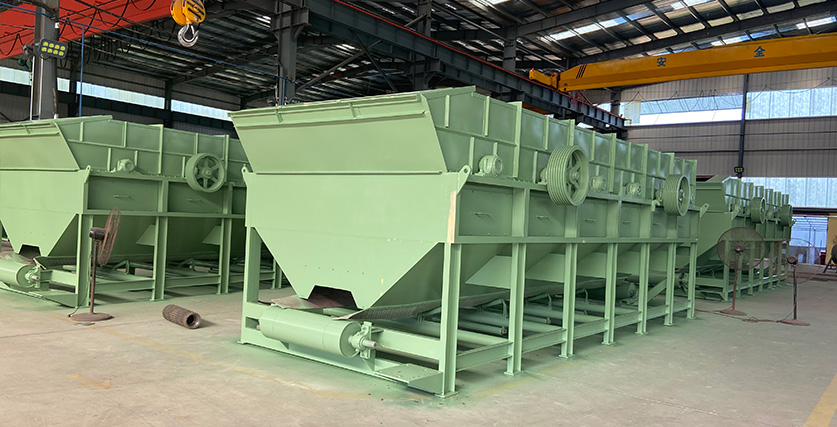
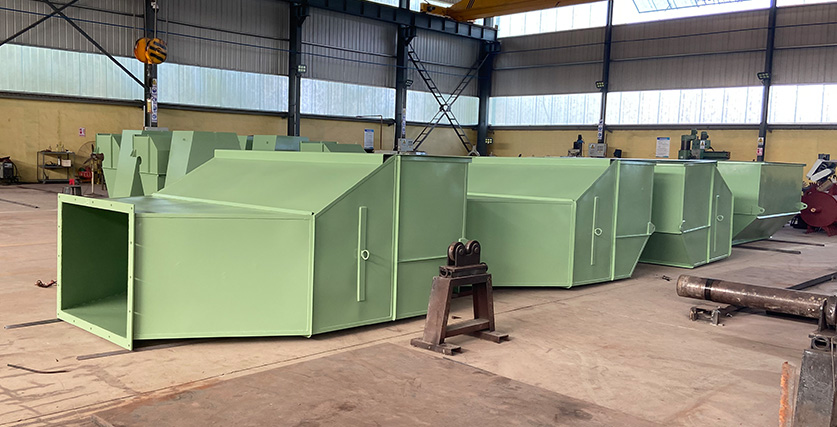
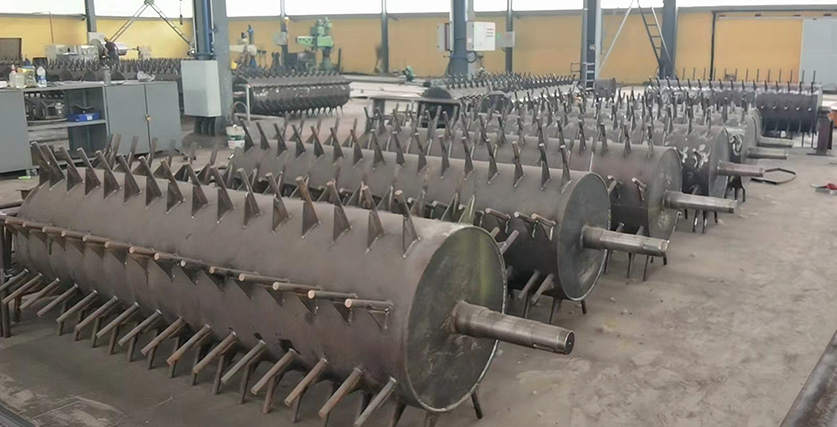



ZCC Roller dust collector is mainly used for dust removal of non-wood paper fiber raw materials in the material preparation section of pulp and paper mills,Such as wheat straw, straw, cotton stalk, palm silk and kenaf etc.
ZCC Roller dust collector is mainly used for dust removal of non-wood paper fiber raw materials in the material preparation section of pulp and paper mills,Such as wheat straw, straw, cotton stalk, palm silk and kenaf etc. Its function is to remove other non-fibrous impurities such as dust, small sand and stones in the cut grass pieces, cotton stalks, palm silk, and hemp stalks.in order to reduce the ash content in papermaking raw materials and improve the quality of paper and pulp.
Compared with traditional dust removal equipment, ZCC Roller dust collector has been greatly improved in structure and performance. Firstly each sieve mesh can be pulled out from the side of the equipment, so that the sieve mesh can be cleaned in time to ensure the working quality of the equipment, Secondly the rotation speed of the claw roller increases gradually from feeding to discharging, thus avoiding the clogging of raw materials and improving the dust removal effect.
The Roller dust collector is mainly composed of a frame, claw roller, sieve plate, belt dust collector and transmission part.Its working principle: After being cut, wheat straw, rice straw, cotton stalks, palm silk, hemp stalks, etc. enter the machine body, Under the action of the claw roller, Separation of non-fibrous impurities such as dust, small sand, debris, etc. The heavier ones fall to the lower part of the body through the sieve holes, and are discharged by the belt conveyor below.
The Roller dust collector is mainly composed of a frame, claw roller, sieve plate, belt dust collector and transmission part.Its working principle: After being cut, wheat straw, rice straw, cotton stalks, palm silk, hemp stalks, etc. enter the machine body, Under the action of the claw roller, Separation of non-fibrous impurities such as dust, small sand, debris, etc. The heavier ones fall to the lower part of the body through the sieve holes, and are discharged by the belt conveyor below.
|
Parameter / Name |
ZCC7 Roller duct collector |
ZCC6 Roller duct collector |
ZCC4 Roller duct collector |
ZCC3 Roller duct collector |
|
Production capacity(t/h) |
>30t/h |
20-24t/h |
12-15t/h |
5-8t/h |
|
Roller rotary speed(r/min) |
n1=502-573 |
398-453 |
345-449 |
345-449 |
|
Roller dimension(mm) |
Ф1120*2500 |
1120*1960 |
750*1170 |
650*770 |
|
Screen hole diameter(mm) |
4-10 |
6-10 |
4-10 |
4-10 |
|
Dust removal type |
Belt dust removal |
Belt dust removal |
Belt dust removal |
Belt dust removal |
|
Main motor(kw) |
55kW-6+45kW-6 |
37*2 |
18.5 |
15 |
|
Dust removal motor(kw) |
7.5 |
4 |
3 |
3 |
|
overall dimension(mm) |
|
7900*3620*2500 |
5770*2300*1860 |
5060*2150*1600 |
1.The temperature shall not exceed 40 ℃.
2.The surrounding environment must not have gas that corrodes metals.
3. Smoking and fire should be strictly prohibited in the workplace.
Preparation before starting up:
1. Check whether the fastening bolts are fastened firmly.
2. Check the lubrication conditions of each lubrication point, and add enough lubricant to each lubrication point.
3. Check and adjust the transmission belt and transmission chain to ensure they are properly tightened.
4. Check whether each transmission component rotates flexibly.
5. Start the motor, check the rotation direction of the claw roller whether the belt conveyor dust removal rotation and operation are normal, and whether there is any failure of the attached electrical device.
6. After an hour of dry running test , the equipment should run flexibly without any blockage or abnormal noise.
7. Re-check whether the rotating parts and fixing bolts are loose, whether the seal of the roller cover is leaking, and whether the sieve hole is blocked by debris.
Precautions for operation:
1. Run idling for 10-15 minutes before starting up, and the production can be formally delivered after the operation is normal.
2. The feeding materials should be continuous and uniform, and large stones and metals are not allowed to enter the machine body.
3. If abnormal noise is found during operation, stop the machine immediately.
4. The temperature rise of the bearing should be less than 40°C.

